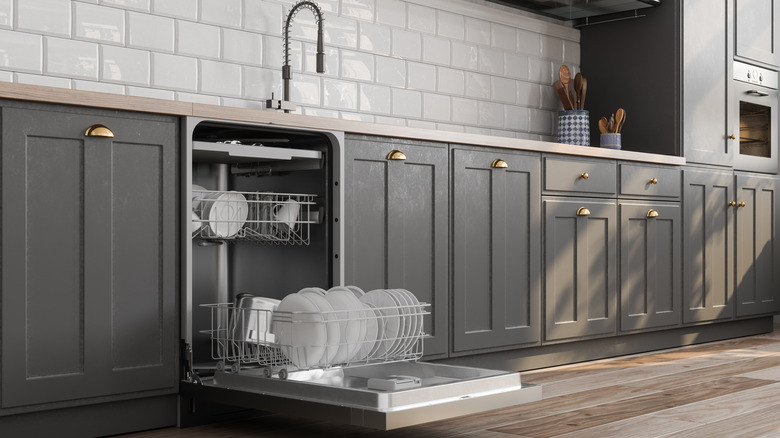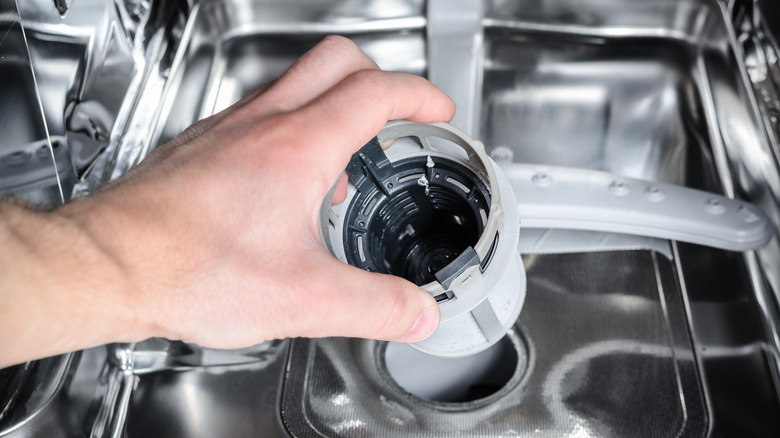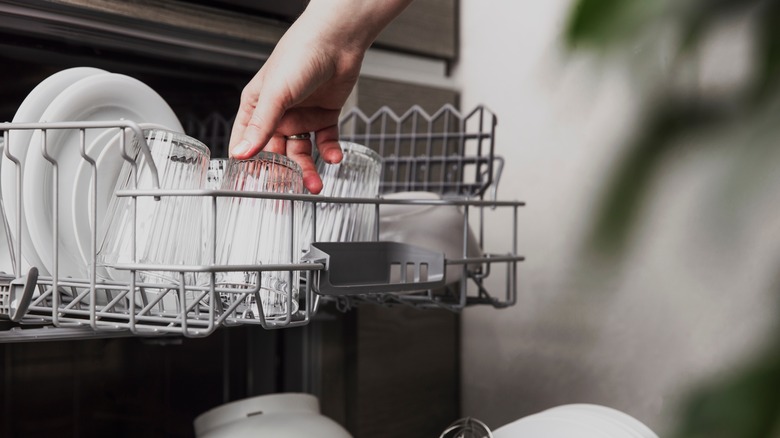What Is The Food Trap In Your Dishwasher And How Do You Access It?
For all the constant and important work they do in the average household, dishwashers are too often underserviced. One of the key steps to keeping this appliance working correctly is accessing the food trap on a regular basis to clean it out. The food trap, sometimes called the filter, is the part of a dishwasher that catches excess food and debris during a wash cycle. The exact location of the food trap depends on the particular model and age of the dishwasher. In the majority of cases, the filter is located on the bottom of the appliance or near the spray arm of the machine, but if you don't find it there, check your user manual.
To access the filter, first remove the lower rack of the dishwasher. Then, search for a round filter with a twisting cap. To take the filter out of the dishwasher, give it a gentle quarter turn counter-clockwise, keeping in mind that this step shouldn't require excessive force. Once you feel a slight release, the filter should detach from the bottom of the dishwasher so that you can access and clean it. Depending on the model of your appliance, your filter may have one or two parts. Two-tiered filters collect different sizes of debris at each level. If there's a lower level of your filter, lift it out separately after removing the upper section.
How to clean out the food trap
Once you understand how to access the food trap, cleaning it out is simple. You don't need any advanced materials to clean your dishwasher filter, as warm water and a gentle cleaning brush will do. Begin by removing the food trap using the instructions above, then placing each part of the filter into your sink basin and running warm water over it. Turn the filter as needed so that the water can reach every section of the filter. This preliminary rinse will help remove debris and get rid of unpleasant food particles.
Next, use a soft cleaning brush or an old, retired toothbrush to gently scrub each filter piece. Avoid abrasive materials like wire brushes, which could cause lasting damage to the filter. You might see a buildup of calcium, which you can brush away with dish soap and a brush. Scrub until all the food debris and calcium deposits are gone, then return the filter parts to your dishwasher once they're thoroughly clean. You'll need to turn the top filter clockwise until it clicks into place. Make sure to double check that all parts are secure before you run the dishwasher again.
Why food trap maintenance is important
The core functions of your dishwasher rely on a clean food trap. When the filter becomes clogged, food particles can end up recirculating during the wash cycle, meaning that your dishes never completely get clean. Ever noticed an unpleasant smell coming from the dishwasher or food chunks from a previous wash resurfacing on your "clean" dishes? A dirty food trap is most likely the culprit, and these signs mean it's time to clean your dishwasher and its filter. Over time, these clogs can even lead to ongoing issues with dishwasher function. Clogged food traps can cause a water backup in the bottom of your appliance or cause it to shut off completely.
How frequently you should access and clean the food trap depends on if you pre-rinse your dishes and how often you run the dishwasher. For example, you should clean the filter only once a year if you pre-wash your dishes, even if you run the appliance twice a day. On the other hand, if you do not scrape or rinse your dishes before you load them into the dishwasher, you should clean the food trap every two months, even if you only run a couple of loads each week.


